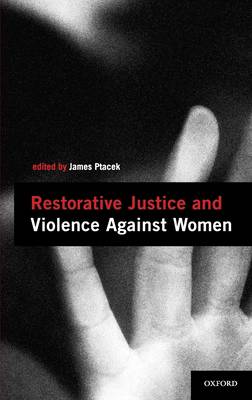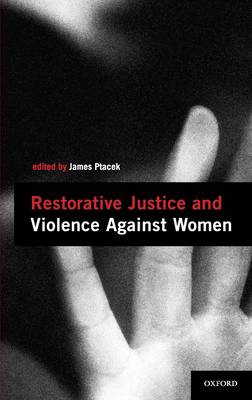
- Retrait gratuit dans votre magasin Club
- 7.000.000 titres dans notre catalogue
- Payer en toute sécurité
- Toujours un magasin près de chez vous
- Retrait gratuit dans votre magasin Club
- 7.000.0000 titres dans notre catalogue
- Payer en toute sécurité
- Toujours un magasin près de chez vous
Restorative Justice and Violence Against Women
135,45 €
+ 270 points
Description
Despite significant accomplishments over the past 35 years, antiviolence activists know that justice for most abused women remains elusive. Most victims do not call the police or seek help from the courts, making it crucial to identify new ways for survivors to find justice. This path-breaking book examines new justice practices for victims that are being used in the United States, Canada, Australia, and New Zealand. These informal, dialogue-based practices, referred to as "restorative justice," seek to decrease the role of the state in responding to crime, and increase the involvement of communities in meeting the needs of victims and offenders. Restorative justice is most commonly used to address youth crimes and is generally not recommended or disallowed for cases of rape, domestic violence, and child sexual abuse. Nevertheless, restorative practices are beginning to be used to address violent crime. Restorative Justice and Violence Against Women considers both the dangers and potential benefits of using restorative justice in response to these crimes. The contributors include antiviolence activists and scholars from the United States, Canada, Australia, and New Zealand. Some are strongly in favor of using restorative practices in these cases, some are strongly opposed, and many lie somewhere in between. Their chapters introduce a range of perspectives on alternative justice practices, offering rich descriptions of new programs that combine restorative justice with feminist antiviolence approaches. Controversial and forward-thinking, this volume presents a much-needed analysis of restorative justice practices in cases of violence against women. Advocates, community activists, and scholars will find the theoretical perspectives and vivid case descriptions presented here to be invaluable tools for creating new ways for abused women to find justice.
Spécifications
Parties prenantes
- Editeur:
Contenu
- Nombre de pages :
- 312
- Langue:
- Anglais
- Collection :
Caractéristiques
- EAN:
- 9780195335484
- Date de parution :
- 16-11-09
- Format:
- Livre relié
- Format numérique:
- Ongenaaid / garenloos gebonden
- Dimensions :
- 164 mm x 238 mm
- Poids :
- 580 g

Les avis
Nous publions uniquement les avis qui respectent les conditions requises. Consultez nos conditions pour les avis.





